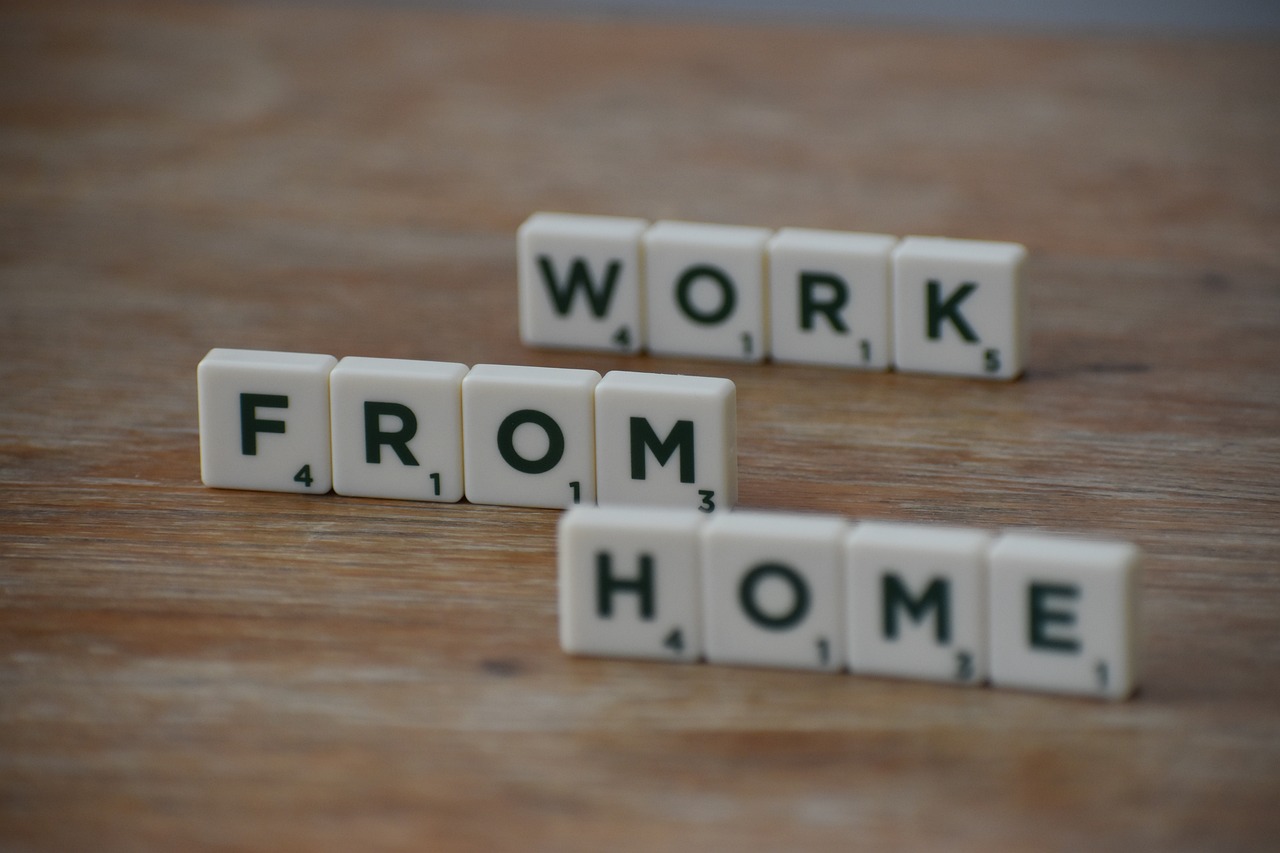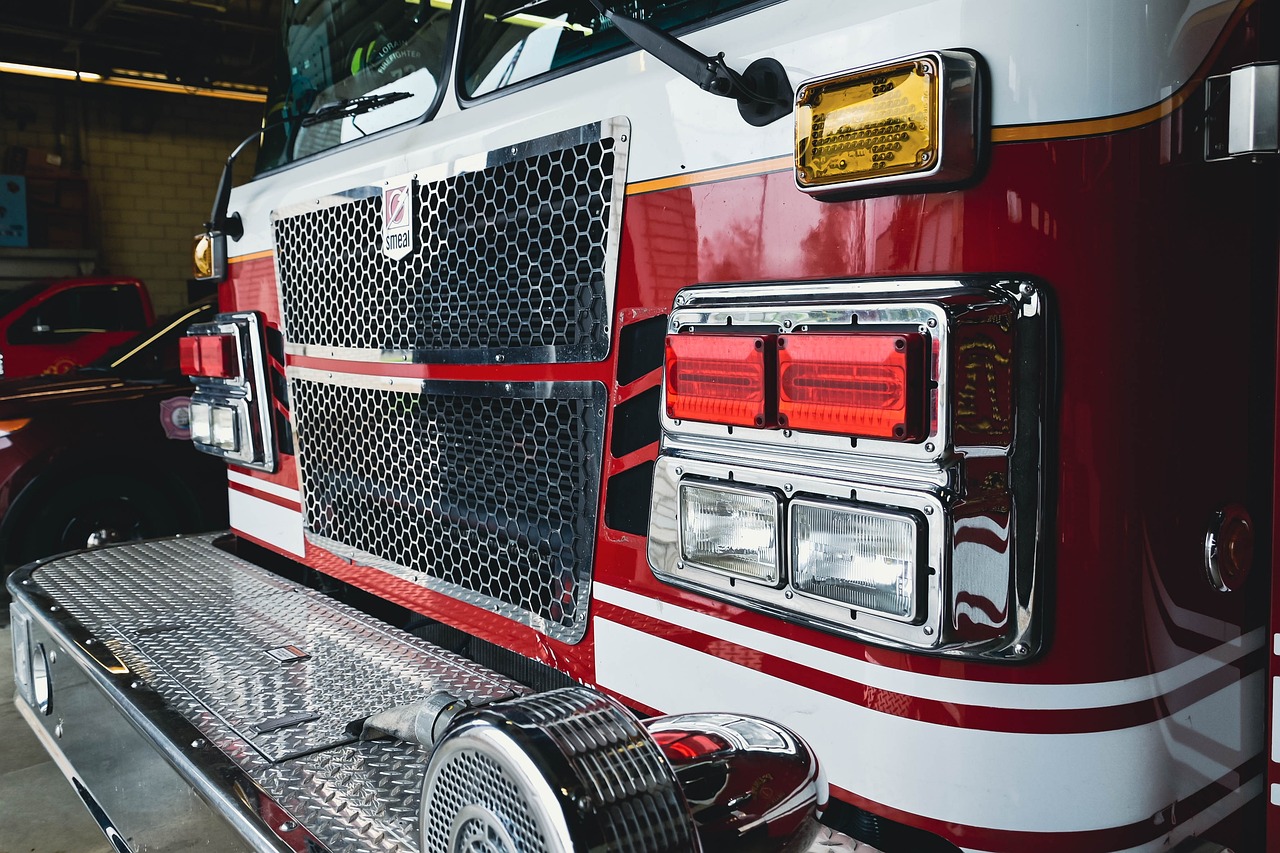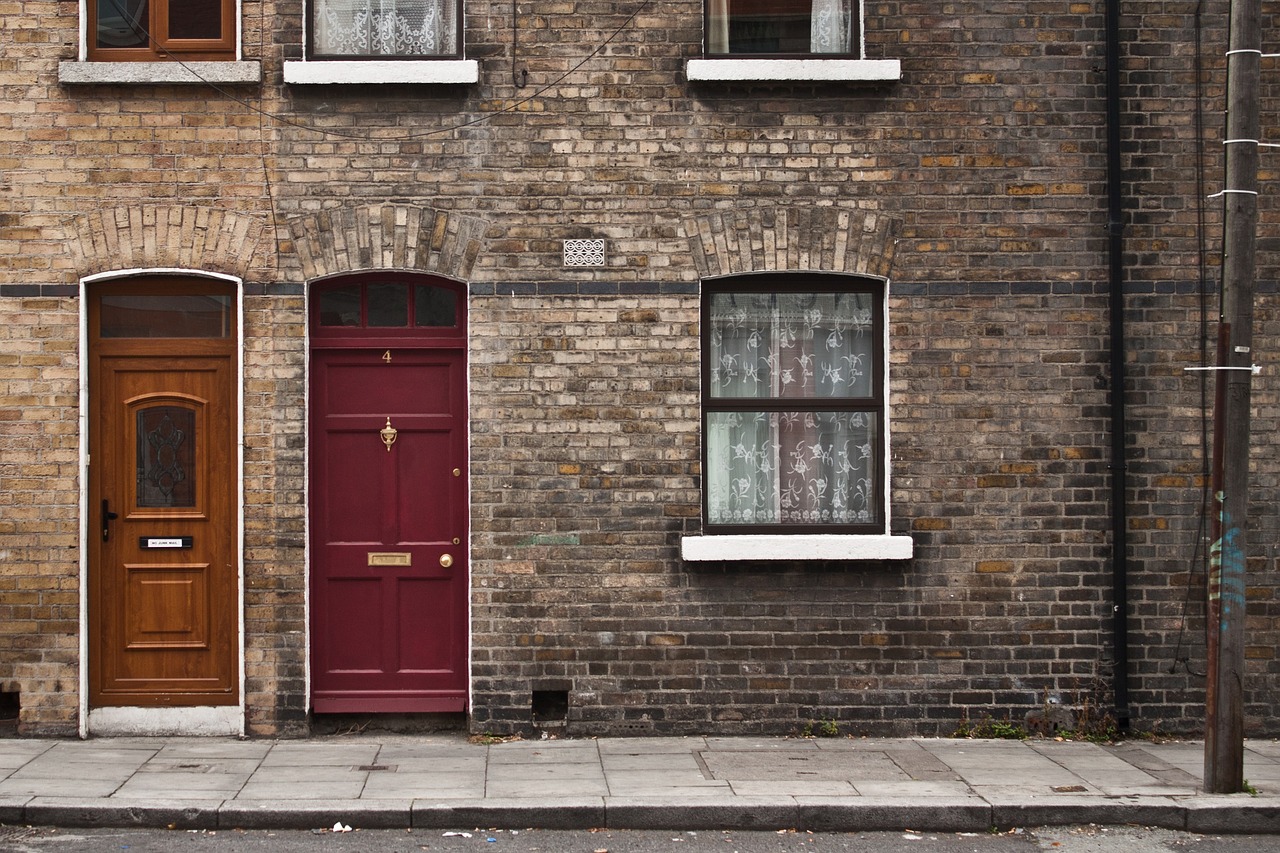Home Safety Measures - Protecting Your Castle
Your home is more than just a place to live; it's your sanctuary, your castle. Just like any fortress, it needs to be fortified to ensure the safety of those who reside within its walls. In today's world, where unpredictability lurks around every corner, understanding and implementing effective home safety measures is not just a luxury—it's a necessity. From the moment you step through your front door, you should feel secure, knowing that your loved ones are protected from potential threats. So, how can you transform your humble abode into a fortress of safety? In this article, we'll dive deep into various strategies that can help you safeguard your living space, ensuring peace of mind for you and your family.
First and foremost, let's talk about the importance of a comprehensive home security system. Think of it as the first line of defense against unwanted intruders. With a variety of options available—from simple locks to advanced surveillance systems—there's something for every homeowner. But what makes a security system effective? It’s not just about having the latest technology; it's about understanding your unique needs and the vulnerabilities of your home. For instance, having motion-sensor lights can deter potential burglars before they even approach your door. Additionally, integrating smart technology allows you to monitor your home remotely, giving you real-time updates and control at your fingertips.
But home safety doesn’t stop at security systems. Fire safety is another crucial aspect that every homeowner should prioritize. Imagine waking up in the middle of the night to the smell of smoke—it's a terrifying thought. This is where fire prevention measures come into play. Installing smoke detectors in key areas of your home can be a lifesaver. These devices act as your early warning system, alerting you to danger before it escalates. However, having smoke detectors is just the beginning; regular maintenance is essential to ensure they function correctly when you need them the most. Keeping your family safe also means having a fire escape plan in place. This plan should be practiced regularly, ensuring everyone knows exactly what to do in case of an emergency.
Lastly, let’s not forget about the most vulnerable members of our households—children and pets. Childproofing your home is a critical step in creating a safe environment for your little ones. This means identifying potential hazards, such as sharp corners, electrical outlets, and toxic substances, and taking proactive measures to mitigate these risks. On the other hand, pets also require special attention. They can be curious creatures, often getting into trouble if left unattended. By understanding their behavior and potential dangers around the house, you can create a safe haven for your furry friends.
In conclusion, protecting your home is about creating a safe and secure environment for everyone who enters. By understanding the various aspects of home safety—from security systems and fire prevention to childproofing and pet safety—you can take actionable steps to fortify your castle. Remember, vigilance and preparation are key. So, are you ready to take your home safety to the next level?
- What are the most effective home security systems? The most effective systems combine alarm systems, surveillance cameras, and smart home technology to provide comprehensive coverage.
- How often should I test my smoke detectors? It's recommended to test your smoke detectors at least once a month and replace the batteries twice a year.
- What should be included in a fire escape plan? Your fire escape plan should include two exits from every room, a meeting point outside, and regular practice drills.
- How can I childproof my home effectively? Focus on securing furniture, covering outlets, and storing hazardous materials out of reach.
- What are some common pet hazards in the home? Common hazards include toxic plants, choking hazards, and unsecured trash cans.

Understanding Home Security Systems
When it comes to protecting your home, home security systems are your first line of defense. Imagine your home as a fortress; without a solid defense, it becomes vulnerable to unwanted intruders. These systems come in various forms, each designed to cater to different needs and preferences. From basic alarm systems to advanced smart home integrations, understanding these options can significantly enhance your peace of mind.
One of the most common types of security systems is the monitored system. This type connects to a central monitoring station, which keeps an eye on your property 24/7. If an alarm is triggered, the monitoring service will notify the authorities immediately. Think of it as having a vigilant guard on duty at all times, ready to spring into action at the slightest sign of trouble.
On the other hand, there are unmonitored systems that trigger an alarm but do not alert a monitoring service. Instead, they rely on loud sirens to scare off intruders and alert you and your neighbors. While they are generally more affordable, they lack the immediate response that monitored systems provide. It's like having a dog that barks loudly when a stranger approaches, but without someone to call for help if you’re not home.
Another popular choice is the smart security system, which integrates with your smartphone and other smart devices. These systems allow you to monitor your home remotely, receive alerts, and even control locks and cameras from anywhere in the world. Imagine being able to check your front porch camera while sipping coffee at a café across town. The convenience and control offered by smart systems are truly game-changing.
When considering a security system, it’s essential to evaluate the features that matter most to you. Here are some key features to look for:
- Video Surveillance: Cameras that allow you to see what's happening in real-time.
- Motion Sensors: Devices that detect movement and can trigger alarms.
- Smart Locks: Keyless entry systems that enhance convenience and security.
- Environmental Sensors: Alerts for smoke, carbon monoxide, or flooding.
In addition to these features, installation is another critical aspect. Some systems are DIY-friendly, allowing you to set everything up yourself, while others may require professional installation. Think about your comfort level with technology and whether you prefer a hands-on approach or a hassle-free installation by experts.
Lastly, consider the cost involved. Security systems can vary significantly in price, depending on the features, installation, and monitoring services. It’s wise to do your research, compare options, and even read reviews to find the best fit for your needs and budget. After all, investing in a security system is investing in your peace of mind and the safety of your loved ones.
In conclusion, understanding home security systems is crucial for safeguarding your property. With various options available, you can choose a system that suits your lifestyle and provides the level of security you desire. Remember, your home is your castle, and it deserves the best protection possible!

Fire Safety Precautions
Fire safety is not just a set of rules; it's a vital practice that can make the difference between life and death in your home. Imagine waking up in the middle of the night to the smell of smoke or the sound of crackling flames. It's a terrifying thought, but with the right precautions, you can significantly reduce the risks associated with fire hazards. In this section, we’ll explore essential fire prevention tips that every homeowner should implement to protect their loved ones and property.
First and foremost, having functioning smoke detectors in your home is crucial. These little devices are your first line of defense against fire. They work tirelessly, silently monitoring the air for signs of smoke. If they detect danger, they’ll sound an alarm, giving you precious moments to escape. It's essential to install smoke detectors on every level of your home, especially near sleeping areas. But remember, just installing them isn’t enough; regular maintenance is key. You should test them once a month and replace the batteries at least once a year. Think of it as a safety check-up for your home.
Now, you might be wondering, "What kind of smoke detector should I get?" This is where understanding the differences between various types of detectors comes into play. There are primarily two types: ionization detectors and photoelectric detectors. Ionization detectors are great for detecting fast-flaming fires, like those caused by paper or wood. On the other hand, photoelectric detectors are more effective for smoldering fires, which are often caused by things like upholstery or electrical wiring. By understanding these differences, you can make an informed choice that suits your home’s specific needs.
When selecting a smoke detector, consider factors such as the size of your home and the presence of pets or children. For larger homes, you might want to install interconnected smoke detectors, which can communicate with one another. This way, if one goes off, they all do, ensuring that everyone is alerted no matter where they are in the house. Additionally, some modern smoke detectors come with smart technology, allowing you to receive alerts on your smartphone. It's like having a personal fire watchman!
Once you have your smoke detectors in place, maintaining them is the next step. Regular maintenance includes testing the alarms monthly, vacuuming the units to remove dust, and replacing the batteries at least once a year. If your smoke detector is over ten years old, it’s time to replace it entirely. Just like a car needs regular oil changes, your smoke detectors need attention to function correctly. Don't let negligence put your family at risk!
In addition to smoke detectors, having a fire extinguisher readily available is another critical element of fire safety. Fire extinguishers can help you tackle small fires before they escalate into larger disasters. Make sure to keep one in the kitchen, as this is where most fires start. Familiarize yourself and your family with how to use it. Remember the acronym PASS: Pull the pin, Aim low, Squeeze the handle, and Sweep from side to side. In an emergency, knowing these steps can save lives.
Lastly, creating a fire escape plan is essential. This plan should include multiple escape routes from each room and a designated meeting place outside. Practice this plan with your family at least twice a year. It’s not just about having a plan; it’s about being prepared. Think of it like a fire drill at school—everyone knows what to do and where to go, which can save valuable time during a real emergency.
By incorporating these fire safety precautions into your home, you’re not just protecting your property; you’re safeguarding your family. Fire safety is a shared responsibility, and every little step counts. So, take the time to assess your home, install those smoke detectors, maintain your fire extinguishers, and practice your escape routes. You’ll sleep better at night knowing you’ve done everything possible to protect your castle.
- How often should I test my smoke detectors? - You should test your smoke detectors at least once a month.
- Where should I place smoke detectors? - Install smoke detectors on every level of your home, especially outside sleeping areas.
- What type of fire extinguisher should I have? - A multi-purpose extinguisher (ABC type) is recommended for home use.
- How can I create a fire escape plan? - Identify two exits from each room and establish a meeting point outside.

Smoke Detectors: Your First Line of Defense
When it comes to home safety, smoke detectors are your **first line of defense** against potential fire hazards. Imagine a scenario where you’re sound asleep, and a fire breaks out in your kitchen. A smoke detector can be the difference between a minor scare and a devastating tragedy. These devices are designed to alert you at the first sign of smoke, giving you valuable time to react and escape. But how do you ensure that your smoke detectors are functioning at their best?
First, it's essential to understand the **placement** of smoke detectors in your home. According to fire safety experts, you should install smoke detectors on every level of your home, especially near sleeping areas. This strategic placement ensures that the alarm is loud enough to wake you up, even if you’re in a deep sleep. Additionally, it’s a good idea to have smoke detectors in common areas, like hallways and living rooms, where smoke may accumulate. Remember, the higher the detector is placed, the better it can sense smoke rising from a fire.
Next, let’s talk about **maintenance**. Regular maintenance of smoke detectors is crucial for their effectiveness. It’s not enough to just install them and forget about them. You should test your smoke detectors at least once a month by pressing the test button. If you hear a loud beep, congratulations! Your detector is working. If not, it’s time to replace the batteries or the entire unit. Most smoke detectors use a 9-volt battery, which should be replaced at least once a year. Some newer models come with a sealed lithium battery that lasts up to 10 years, but even those need to be replaced after the unit reaches its expiration date.
But how do you choose the right smoke detector for your home? There are two main types to consider: **ionization** and **photoelectric** detectors. Ionization detectors are generally more responsive to fast-burning fires, like those fueled by paper or wood. On the other hand, photoelectric detectors are better at sensing slow-smoldering fires, which are often caused by upholstery or electrical issues. For optimal safety, many experts recommend using a combination of both types, ensuring that you’re covered for all kinds of fire scenarios.
In conclusion, smoke detectors are a crucial element of your home safety plan. They provide a sense of security and peace of mind, allowing you to focus on what truly matters—your family. By ensuring proper placement, regular maintenance, and selecting the right type of smoke detector, you can significantly reduce the risks associated with fire hazards. Remember, a little effort in maintaining your smoke detectors can go a long way in protecting your loved ones.
- How often should I replace my smoke detectors? It is recommended to replace smoke detectors every 10 years, or sooner if they are not functioning properly.
- Can I use a smoke detector in the kitchen? It’s best to avoid placing smoke detectors directly in the kitchen to prevent false alarms. Instead, install them nearby.
- What should I do if my smoke detector goes off? Stay calm, check for signs of smoke or fire, and evacuate your home if necessary. Never ignore the alarm.

Choosing the Right Smoke Detector
When it comes to protecting your home from the threat of fire, choosing the right smoke detector is crucial. Not all smoke detectors are created equal, and understanding the differences can make a significant impact on your safety. There are primarily two types of smoke detectors you should consider: ionization detectors and photoelectric detectors. Each type has its own unique features and advantages, making them suitable for different situations.
Ionization smoke detectors are particularly effective at detecting fast-flaming fires, such as those caused by paper or flammable liquids. They work by using a small amount of radioactive material to ionize the air in the sensing chamber, which creates a current. When smoke enters this chamber, it disrupts the current, triggering the alarm. However, these detectors can sometimes be less effective at detecting smoldering fires, which can produce significant smoke before flames become visible.
On the other hand, photoelectric smoke detectors excel at detecting slow-smoldering fires, like those that start in upholstered furniture or bedding. They use a light source and a sensor; when smoke enters the chamber, it scatters the light beam, which then triggers the alarm. This type of detector is often recommended for bedrooms and living areas where smoldering fires are more likely to occur.
So, which one should you choose? The best approach is to use a combination of both types to cover all bases. Having both ionization and photoelectric detectors can provide a comprehensive safety net, ensuring that your home is protected from various types of fire hazards. Additionally, consider the following features when selecting a smoke detector:
- Battery Backup: Ensure your smoke detector has a battery backup in case of a power outage.
- Interconnected Systems: Look for detectors that can communicate with each other, so if one goes off, they all do.
- Smart Technology: Some modern detectors can send alerts to your smartphone, keeping you informed even when you’re not home.
Lastly, don’t forget about placement! Smoke detectors should be installed on every level of your home, inside each bedroom, and outside sleeping areas. Proper placement is just as important as choosing the right type. Remember, your smoke detector is your first line of defense against fire, so take the time to make an informed decision.
Q: How often should I replace my smoke detectors?
A: It's recommended to replace smoke detectors every 10 years, but be sure to check the manufacturer's guidelines.
Q: Can I use a smoke detector in my kitchen?
A: While it’s not advisable to place a smoke detector directly in the kitchen due to false alarms from cooking, you can install one nearby, ensuring it’s at least 10 feet away from cooking appliances.
Q: How do I maintain my smoke detectors?
A: Regularly test your smoke detectors once a month, replace batteries at least once a year, and clean the units to prevent dust buildup.

Maintaining Your Smoke Detectors
Maintaining your smoke detectors is not just a good idea; it's an essential part of ensuring your home is safe from the threat of fire. Think of your smoke detector as the vigilant guardian of your castle, always on the lookout for danger. However, like any guardian, it needs regular attention to perform its duty effectively. One of the simplest yet most crucial tasks is to test your smoke detectors monthly. Press the test button on the unit; if you hear a loud beep, you're in good shape! If not, it might be time for a battery change or even a replacement.
Speaking of batteries, it's important to replace them at least once a year, but you might want to consider doing it twice a year, perhaps when you change your clocks for Daylight Saving Time. This makes it easy to remember! Additionally, if your smoke detector starts to emit a chirping sound, that’s a clear indication that the battery is low and needs immediate attention. Don't wait until it’s too late; act swiftly!
Another key aspect of maintenance is to clean your smoke detectors regularly. Dust and debris can accumulate, potentially interfering with their ability to detect smoke. A simple vacuuming or wiping down with a damp cloth can do wonders. Make sure to follow the manufacturer's instructions for cleaning, as different models may have specific requirements. Remember, a clean detector is a reliable detector!
Lastly, keep in mind that smoke detectors don’t last forever. Most units have a lifespan of about 10 years. After this period, they should be replaced entirely. To keep track, consider marking the installation date on the back of the unit or setting a reminder on your phone. By staying proactive about maintaining your smoke detectors, you’re not just following safety protocols; you’re actively protecting your loved ones and your home.
In summary, maintaining your smoke detectors involves:
- Testing them monthly
- Replacing batteries at least once a year
- Cleaning them regularly to prevent dust buildup
- Replacing the units every 10 years
By incorporating these simple practices into your routine, you can ensure that your smoke detectors remain effective guardians of your home, ready to alert you at the first sign of danger.
Q: How often should I test my smoke detectors?
A: You should test your smoke detectors at least once a month to ensure they are functioning properly.
Q: When should I replace the batteries in my smoke detectors?
A: It is recommended to replace the batteries at least once a year, but doing it twice a year is even better.
Q: How can I clean my smoke detectors?
A: You can clean your smoke detectors by gently vacuuming them or wiping them with a damp cloth. Be sure to follow the manufacturer's instructions.
Q: How long do smoke detectors last?
A: Most smoke detectors have a lifespan of about 10 years. After that, they should be replaced.

Creating a Fire Escape Plan
When it comes to ensuring the safety of your family during a fire, having a well-thought-out fire escape plan is essential. Think of it as your family's lifeline in a moment of chaos. Just like you wouldn't set sail without a map, you shouldn't wait until disaster strikes to figure out how to get out of your home safely. A fire escape plan can be the difference between panic and a smooth evacuation.
Start by mapping out your home. Grab a piece of paper and sketch out each room, marking all the exits. Make sure to include windows, doors, and any other potential escape routes. It's important to identify at least two ways out of every room, especially bedrooms. In the case of a fire, smoke can quickly fill the air and make it difficult to see, so having multiple exit options is crucial.
Next, make sure everyone in your household knows the plan. Gather the family and walk through the escape routes together. You can even turn it into a fun drill! Practice crawling low under smoke, as this is the safest way to navigate through a smoke-filled space. If you have young children, consider assigning them a buddy system, so they can help each other during an emergency.
Once you’ve practiced your escape, it’s time to designate a meeting point. This should be a safe distance from your home, like a neighbor’s yard or a tree at the end of your street. This way, everyone knows where to go once they’ve escaped, making it easier to account for everyone. Remember, never go back inside for pets or belongings; safety comes first!
Lastly, keep your fire escape plan updated. As your family grows or changes, so should your plan. Regularly review and practice it, especially if you make any changes to your home, like renovations or moving furniture. You can even create a fire escape plan poster and hang it in a visible spot in your home, like on the fridge, to remind everyone of the steps to take in case of an emergency.
In summary, creating a fire escape plan involves mapping out your home, practicing the routes with your family, designating a meeting point, and keeping the plan updated. By taking these proactive steps, you can ensure that your loved ones are prepared to handle a fire emergency effectively.
- What should I do if I encounter smoke while escaping? - Stay low to the ground, as smoke rises. Crawl if necessary and cover your mouth with a cloth to avoid inhaling smoke.
- How often should we practice our fire escape plan? - It’s recommended to practice at least twice a year to keep everyone familiar with the escape routes.
- What if my child is home alone during a fire? - Ensure your child knows the escape plan and has a way to contact emergency services. Consider installing a monitored security system that can alert authorities.

Home Safety for Children and Pets
Ensuring the safety of children and pets within your home is not just a priority; it's a responsibility that every homeowner should take seriously. Imagine your home as a fortress, where every room is a safe haven for your loved ones. However, just like any castle, it requires constant vigilance and protective measures to keep potential dangers at bay. From sharp corners to toxic plants, the list of hazards can be extensive, but with a little foresight and preparation, you can create a secure environment.
Let’s start with childproofing your home. Children are naturally curious, and their adventurous spirits can lead them into precarious situations. The first step in childproofing is to identify common hazards. For instance, electrical outlets, stairs, and heavy furniture can pose risks if not properly secured. Installing outlet covers, using safety gates at the top and bottom of stairs, and anchoring furniture to the wall can significantly reduce the likelihood of accidents. Additionally, consider using corner guards on sharp edges of furniture to prevent injuries from falls.
Furthermore, it's essential to store hazardous materials out of reach. Cleaning supplies, medications, and sharp objects should be kept in locked cabinets or high shelves. This simple act of securing dangerous items can make a world of difference in preventing accidents. It’s also wise to educate older children about the dangers of these items, instilling a sense of responsibility and awareness.
Now, let’s not forget about our furry friends! Pets, like children, can get into mischief if not properly supervised. A pet-safe home is one where potential dangers are minimized. For instance, certain houseplants can be toxic to pets. Here’s a quick look at some common plants that should be avoided:
| Plant | Toxic to Pets |
|---|---|
| Lily | Yes |
| Azalea | Yes |
| Oleander | Yes |
| Philodendron | Yes |
Additionally, you should ensure that any small objects, such as toys or batteries, are kept out of reach, as these can pose choking hazards. Creating a designated play area for your pets can also help keep them safe and contained, especially when you have guests over or during busy household activities. Remember, just like children, pets thrive in a secure environment where they can explore without the risk of injury.
Finally, it’s crucial to establish boundaries and routines. For instance, teaching children how to behave around pets and vice versa can foster a harmonious home. Regularly practicing safety drills with your children can also help them understand what to do in case of an emergency, ensuring they remain calm and collected when it matters most.
In conclusion, prioritizing the safety of children and pets requires a proactive approach. By identifying potential hazards, securing dangerous items, and fostering an environment of awareness, you can protect your loved ones and ensure that your home remains a safe haven. After all, a happy home is a safe home!
- What are some common household hazards for children? Common hazards include sharp objects, electrical outlets, stairs, and toxic substances. It's important to secure these areas and educate children about safety.
- How can I make my home safe for pets? Remove toxic plants, secure small objects, and create designated play areas. Regular vet check-ups can also ensure your pet's health and safety.
- What should I do in case of a fire? Create and practice an emergency escape plan with your family. Ensure smoke detectors are installed and functioning properly.

Childproofing Your Home
When it comes to , think of it as creating a safe fortress for your little ones. Just like a knight protects their castle from invaders, you need to shield your children from potential hazards lurking in every corner of your living space. The first step is to identify common dangers and then implement practical solutions to minimize risks. For instance, sharp corners on furniture can be like hidden traps waiting for an unsuspecting toddler. Investing in corner guards can turn those hazards into safe zones.
Another critical area to focus on is cabinets and drawers. Children are naturally curious, and they love to explore. Imagine them opening a cabinet filled with cleaning supplies or sharp utensils! To prevent this, utilize childproof locks on cabinets and drawers. This simple measure can keep your little adventurers safe from potentially harmful substances and objects. It’s like putting a sturdy lock on the castle gate—essential for keeping the kingdom secure.
Don't forget about the electrical outlets scattered throughout your home. These can be as tempting as a treasure chest for little fingers. Installing outlet covers is a quick and effective way to prevent accidents. Think of them as protective armor for your home’s electrical systems. Additionally, keep cords and cables out of reach or use cord organizers to eliminate tripping hazards. It’s all about creating a safe environment where your children can explore without fear.
Another essential aspect of childproofing is securing heavy furniture. Have you ever seen a child climb? It’s like watching a tiny mountain goat! To prevent tipping, anchor bookshelves, dressers, and other tall furniture to the wall. This precaution can be a lifesaver, preventing serious accidents if your child decides to turn into a little climber. Just like a fortress needs sturdy walls, your home needs secure furniture to keep everyone safe.
Finally, consider your home's outdoor areas. Fenced yards are great, but they should be monitored closely. Ensure that gates are locked and that any play equipment is safe and age-appropriate. You wouldn’t want your little ones wandering into the wilderness surrounding your castle! Regularly inspect your yard for any potential hazards like sharp tools or poisonous plants, and remove them. Your goal is to create a safe haven where your children can play freely while you keep a watchful eye.
In summary, childproofing your home is about creating a secure environment where your children can thrive. By taking proactive measures, you can turn your home into a safe sanctuary. Remember, a well-prepared fortress is the best defense against the unexpected!
- What are the most common childproofing measures? The most common measures include securing heavy furniture, using outlet covers, installing cabinet locks, and removing sharp objects from reach.
- At what age should I start childproofing my home? It's best to start childproofing as soon as your baby starts to crawl, typically around 6 to 10 months.
- How often should I review my childproofing measures? Regularly review your childproofing measures, especially as your child grows and reaches new developmental milestones.

Pet Safety Tips
When it comes to our beloved pets, their safety is paramount. Just like you would baby-proof your home for a child, you need to pet-proof your living space to ensure your furry friends are safe from potential hazards. Think of your home as a playground for your pets, but with hidden dangers lurking around every corner. From curious kittens to rambunctious puppies, each pet has its own unique set of challenges that require your attention.
One of the first steps in ensuring pet safety is to conduct a thorough inspection of your home. Look for items that could pose a risk, such as exposed electrical cords, small objects that can be swallowed, or toxic plants. Did you know that certain common houseplants, like lilies and philodendrons, can be harmful to your pets? Keeping these plants out of reach or opting for pet-friendly alternatives can make a world of difference.
Another important aspect is to secure your trash cans. Pets are naturally curious and often find their way into garbage, which can lead to choking hazards or poisoning from ingesting harmful substances. Consider using pet-proof trash cans that have secure lids, or store your trash in cabinets that are out of reach. It’s a simple step that can prevent serious accidents.
Additionally, be mindful of the cleaning products and chemicals you use around the house. Many household cleaners contain toxic ingredients that can be harmful or even fatal to pets. Always store these products in high cabinets, and opt for pet-safe cleaning solutions whenever possible. Your home should be a safe haven for your pets, not a place filled with potential dangers.
While we’re on the topic of safety, let’s not forget about pet-proofing your yard. If you have a garden, ensure that it is securely fenced and that there are no gaps where your pet could escape. Additionally, be cautious with fertilizers and pesticides; many of these products are toxic to pets. If you must use them, ensure they are applied well in advance of letting your pets roam freely outside.
It’s also wise to create a designated area for your pets to enjoy. This space should be free from hazards and filled with their toys and comfort items. By having a safe zone, your pets can relax and play without the risk of injury. Consider adding a cozy bed, their favorite toys, and even some chew-proof furniture to keep them entertained and safe.
Lastly, regular veterinary check-ups are essential for maintaining your pet's health and safety. Your vet can provide valuable advice on nutrition, vaccinations, and preventive care, ensuring your furry friend stays healthy and happy. Remember, a healthy pet is a safe pet!
Here are some common questions pet owners often ask regarding pet safety:
- What household items are toxic to pets? Common items include chocolate, grapes, onions, and certain plants like azaleas and oleander.
- How can I pet-proof my garden? Ensure that your garden is securely fenced, and avoid using toxic pesticides or fertilizers.
- What should I do if my pet eats something harmful? Contact your veterinarian or an emergency pet poison hotline immediately for guidance.
- How often should I take my pet to the vet? Regular check-ups at least once a year are recommended, but consult your vet for specific needs based on your pet's age and health.
Frequently Asked Questions
- What are the best home security systems available?
Choosing the right home security system can feel overwhelming, but it's crucial for protecting your castle. Some of the top systems include monitored alarm systems, smart home security cameras, and DIY security kits. Look for features like motion detection, mobile alerts, and video surveillance to ensure you're getting the best protection for your home.
- How often should I test my smoke detectors?
Testing your smoke detectors is essential for maintaining fire safety. It's recommended to test them at least once a month. Additionally, you should replace the batteries at least once a year and consider replacing the entire unit every 10 years. Keeping your smoke detectors in top shape could mean the difference between life and death!
- What should I include in my fire escape plan?
Your fire escape plan should be clear and easy to follow. Include two escape routes from every room, a designated meeting spot outside, and practice the plan with your family regularly. Remember, in the event of a fire, every second counts, so make sure everyone knows what to do!
- How can I childproof my home effectively?
Childproofing your home is all about anticipating dangers. Start by securing heavy furniture to the wall, using safety gates for stairs, and keeping hazardous materials out of reach. Consider outlet covers and corner guards to minimize risks. Remember, a safe home is a happy home for your little ones!
- What are some common household hazards for pets?
Pets can face several dangers in the home, such as toxic plants, choking hazards, and open windows. To keep your furry friends safe, make sure to secure any harmful substances, use pet-proof containers for food, and keep small objects out of reach. A little prevention goes a long way in ensuring your pets stay safe and sound!



















